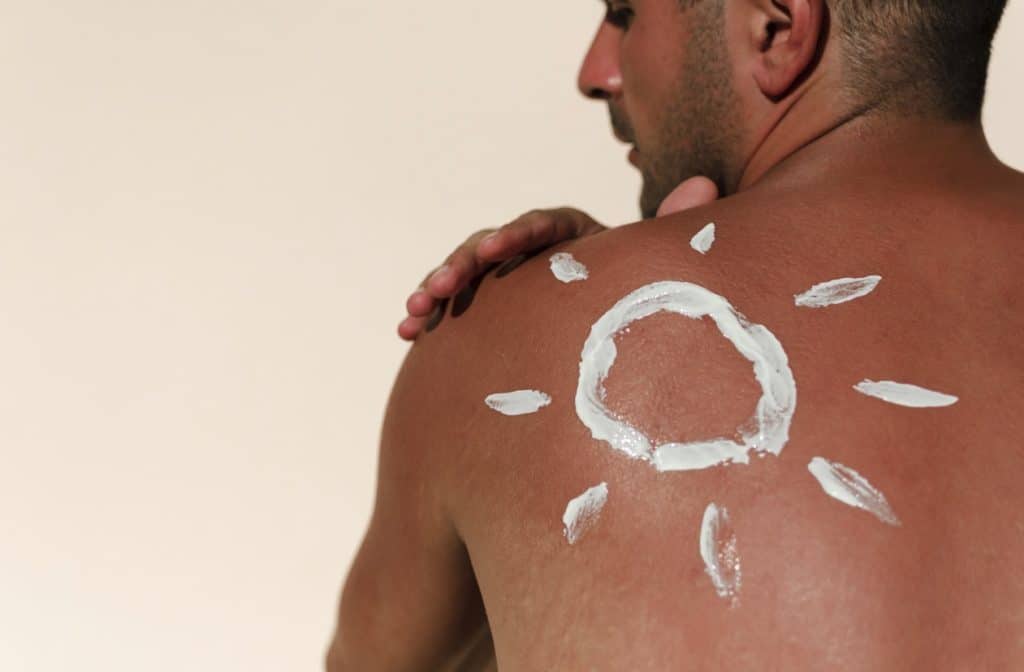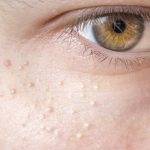Men often overlook their skin until they develop an issue. In this blog, our dermatologists share tips about skin care for men and discuss eight skin conditions that men commonly experience.
Skin care for men is different than it is for women
Men, like women, can develop conditions that affect their overall skin health and appearance. But skin care for men requires a different approach than for women. From razor bumps to athlete’s foot, men experience unique skin challenges that often go untreated.
Learn about these eight common skin concerns for men, along with prevention tips and treatment options:
1. Razor burn
Shaving can lead to irritation, razor burn and ingrown hairs, especially in areas like the beard and neck. Men can reduce the risk of razor burns by shaving with a moisturizing cream or gel and using warm water. For a smoother shave and to avoid cuts and nicks, always use a razor with clean blades.

2. Excess hair growth
There are a few dermatology procedures to address excess hair on the neck or back. One of the most popular options, laser hair removal, uses concentrated light to target hair follicles and inhibit future growth. It is suitable for large areas like the back and chest. Laser hair removal can provide semi-permanent results with minimal discomfort.
For a more permanent hair removal solution, electrolysis may be an option. This method uses electrical currents to destroy hair follicles individually. Electrolysis is more suitable for smaller areas, like between the eyebrows.
3. Acne
Hormonal imbalances, stress and excessive sweating can contribute to acne and frequent breakouts. Men can also be prone to developing body acne.
Keeping the face clean by washing it twice daily to reduce oil and buildup can help prevent breakouts. Daily topical treatment with benzoyl peroxide can also help keep skin clear.
A chemical peel performed by a dermatologist can treat acne by removing the outer layer of skin and dead skin cells. Peels also treat sun damage, age spots and uneven skin tone.
Many men have scarring from having acne when they were younger. Microdermabrasion can help repair skin damage from acne by resurfacing the skin on the face, neck, chest or back.
4. Dry skin
Men tend to have oily skin, but they can still experience dryness and dehydration, especially in harsh climates. Wearing a light moisturizer with SPF can keep the skin hydrated and protected from the sun.
The skin around the eyes is thinner and more prone to wrinkles. Wearing a cream specifically for the eye area can ensure the skin stays hydrated and plump.
5. Sun damage

Prolonged sun exposure can lead to premature aging, sunspots and an increased risk of skin cancer. This is true for both men and women. Wearing sunscreen regularly, especially when working outside daily, can protect the skin from UV rays.
It is important for everyone, regardless of gender or age, to wear sunscreen daily. Skin cancer is the most common and preventable form of cancer.
6. Aging
Our skin gradually loses collagen and elastin when we age, which causes fine lines and wrinkles to appear. Most men forget to wear lotion regularly, but moisturizing is an important part of skin care for men. Keeping the skin hydrated helps reduce signs of aging.
In addition, there are several cosmetic procedures to address wrinkles. Neurotoxins like Botox can be injected into problem areas to reduce muscle movement and soften wrinkles. Yes, gentlemen! Botox is not only for the ladies.
Microneedling is a treatment that rejuvenates the skin by stimulating collagen production. Many people see an improvement after one or two treatments. It addresses fine lines, wrinkles and uneven skin tone.
7. Excessive sweating
Hyperhidrosis is when the body sweats more than it needs to for cooling. Both men and women can experience excessive sweating, but men are less likely to seek treatment.
Botox, often considered an anti-aging treatment, is also used to treat hyperactive sweat glands. It works by paralyzing the nerves that control the sweat glands to prevent them from producing sweat.
8. Athlete’s foot
Athlete’s foot can occur outside of the locker room. If sweat accumulates between the toes, it may result in a fungal infection. Athlete’s foot appears as scaly white patches on the soles of the feet or between the toes.
To prevent this, keep your feet clean and dry. You can also use an anti-fungal cream or medicated foot powder to keep athlete’s foot away.
Skin care routine for men
Complete skin care for men involves a regular skincare routine. Depending on skin type, several skincare products should be in your daily regimen. And most are available in fragrance-free options!
- A gentle facial cleanser to remove dirt and oil without stripping the skin of its natural moisture
- A lightweight, non-greasy moisturizer that hydrates the skin without clogging pores
- A broad-spectrum sunscreen with at least SPF 30 to protect the skin from harmful UV rays and minimize sun damage.
- A moisturizing shaving cream or gel that creates a protective barrier and reduces the risk of irritation during shaving
- Regular exfoliation with a gentle scrub to remove dead skin cells and unclog pores, which reduces the chance of ingrown hairs
- An eye cream to keep the skin hydrated and reduce puffiness and dark circles
- Depending on specific concerns, serums with active ingredients like retinol, vitamin C or hyaluronic acid to target specific issues
Dermatologists offering skin care for men
If you are experiencing skin issues, schedule an appointment with one of the board-certified dermatologists at Columbia Skin Clinic. We offer clinical dermatology and cosmetic treatments for a variety of issues that men often experience. Contact us today to make an appointment.






